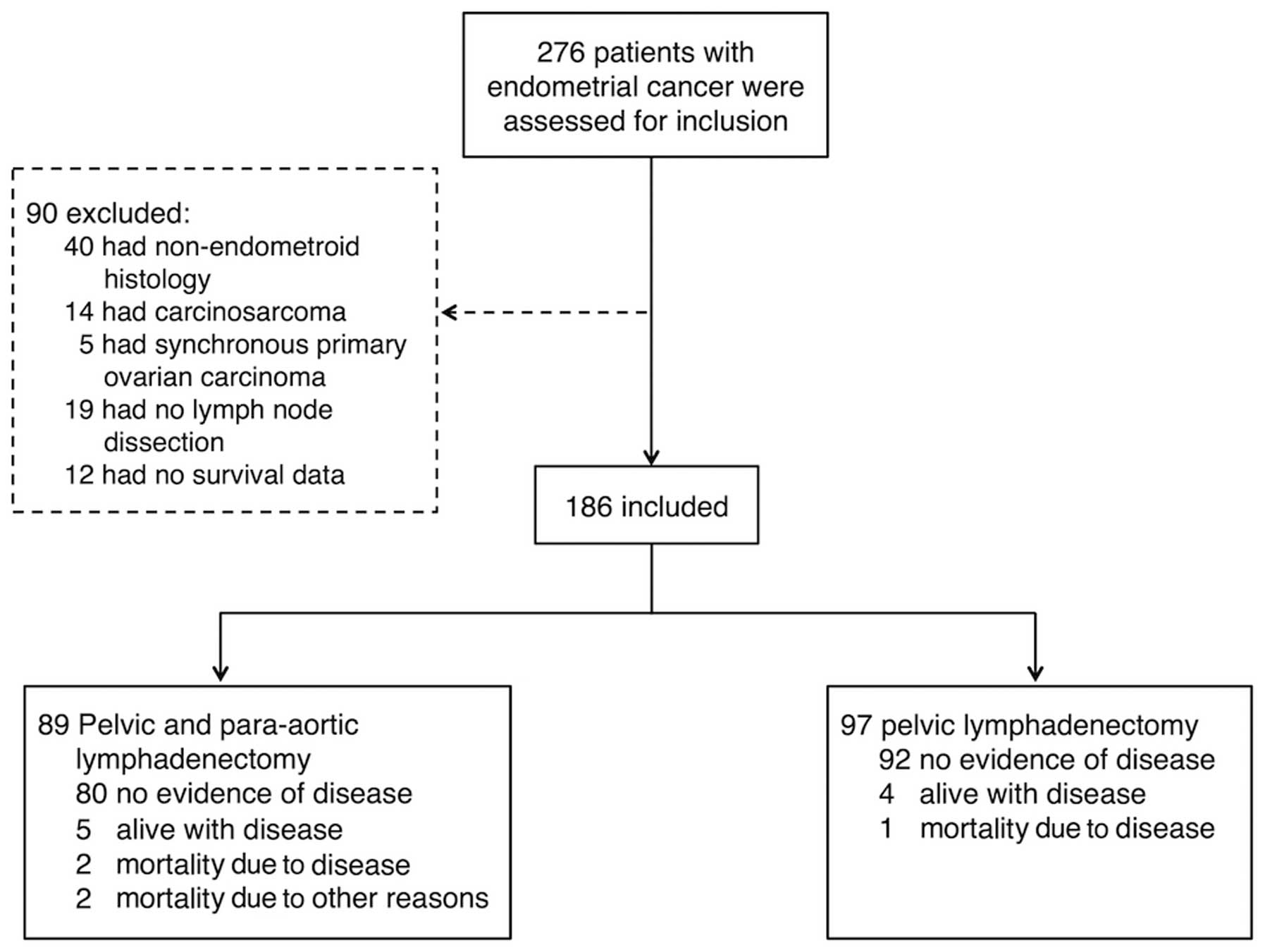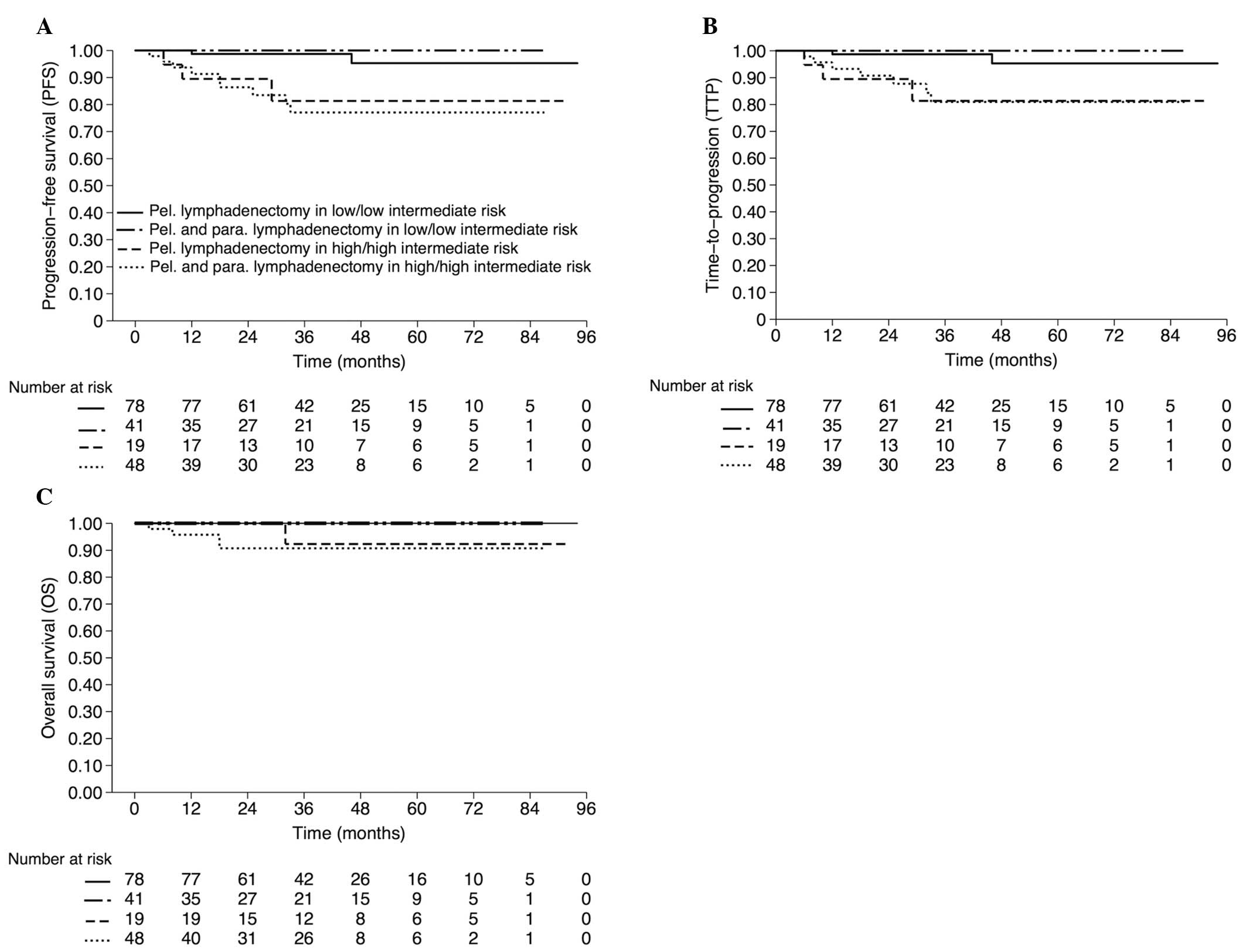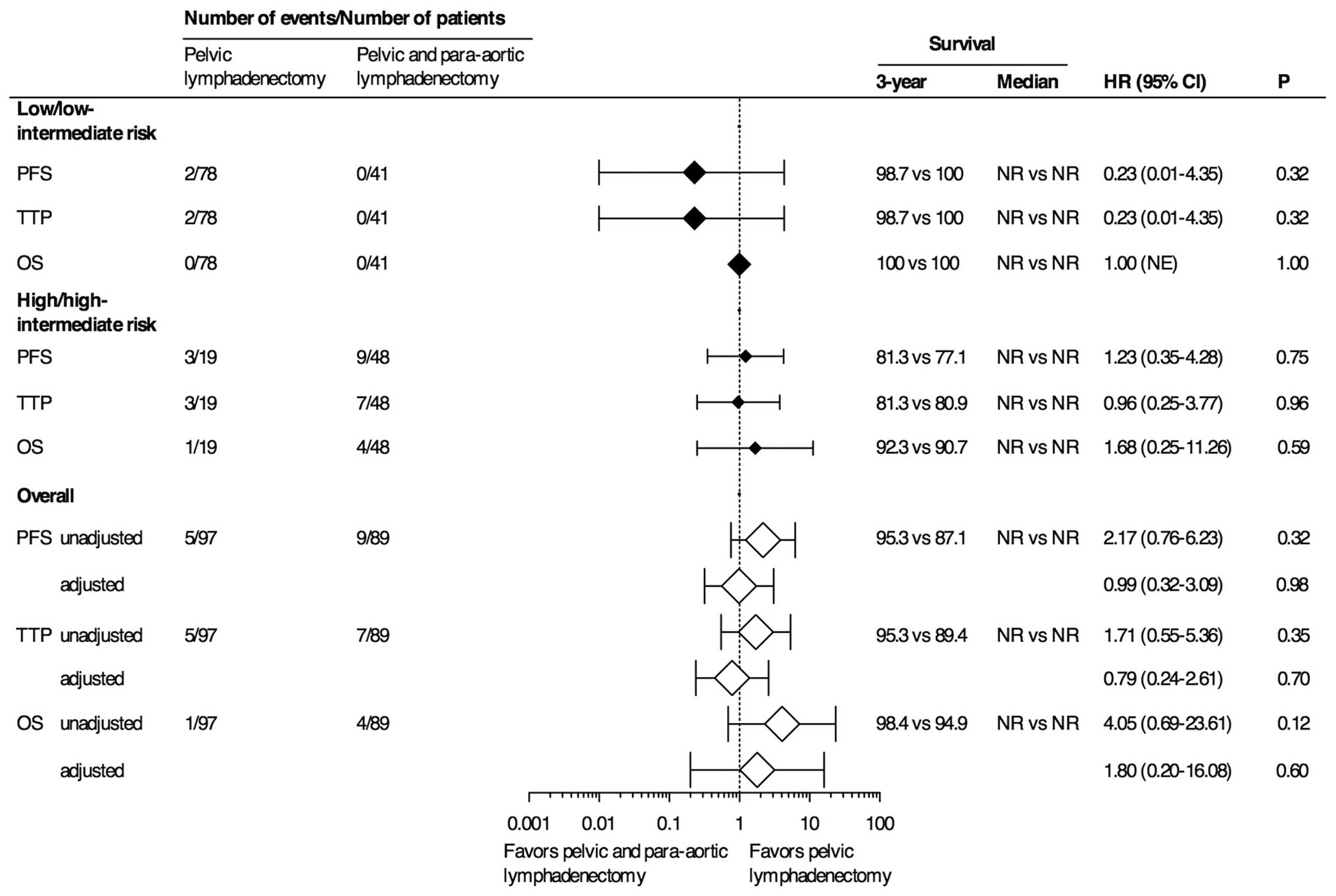|
1
|
FIGO. Classification and staging of
malignant tumours in the female pelvis. Int J Gynaecol Obstet.
28:1901989.
|
|
2
|
Pecorelli S: Revised FIGO staging for
carcinoma of the vulva, cervix, and endometrium. Int J Gynaecol
Obstet. 105:103–104. 2009. View Article : Google Scholar : PubMed/NCBI
|
|
3
|
Mariani A, Webb MJ, Galli L and Podratz
KC: Potential therapeutic role of para-aortic lymphadenectomy in
node-positive endometrial cancer. Gynecol Oncol. 76:348–356. 2000.
View Article : Google Scholar : PubMed/NCBI
|
|
4
|
Fujimoto T, Nanjyo H, Nakamura A, et al:
Para-aortic lymphadenectomy may improve disease-related survival in
patients with multipositive pelvic lymph node stage IIIc
endometrial cancer. Gynecol Oncol. 107:253–259. 2007. View Article : Google Scholar : PubMed/NCBI
|
|
5
|
Havrilesky LJ, Cragun JM, Calingaert B, et
al: Resection of lymph node metastases influences survival in stage
IIIC endometrial cancer. Gynecol Oncol. 99:689–695. 2005.
View Article : Google Scholar : PubMed/NCBI
|
|
6
|
Benedetti Panici P, Basile S, Maneschi F,
et al: Systematic pelvic lymphadenectomy vs. no lymphadenectomy in
early-stage endometrial carcinoma: randomized clinical trial. J
Natl Cancer Inst. 100:1707–1716. 2008. View Article : Google Scholar : PubMed/NCBI
|
|
7
|
Kitchener H, Swart AM, Qian Q, et al:
Efficacy of systematic pelvic lymphadenectomy in endometrial cancer
(MRC ASTEC trial): a randomised study. Lancet. 373:125–136. 2009.
View Article : Google Scholar
|
|
8
|
Silverberg SG, Kurman RJ, Nogales F,
Mutter GL, Kubik-Huch RA and Tavassoli FA: Tumours of the uterine
corpus Epithelial tumours and related lesions. World Health
Organization Classification of Tumours. Pathology and Genetics of
Tumours of the Breast and Female Genital Organs. Tavassoli FA and
Devilee P: IARC; Lyon, France: pp. 222–223. 2003
|
|
9
|
GOG-249 Protocol. http://www.cancer.gov/clinicaltrials/search/view?cdrid=629591&version=HealthProfessional.
Accessed September 12, 2014
|
|
10
|
FDA. Guidance for Industry. Clinical Trial
Endpoints for the Approval of Cancer Drugs and Biologics. May.
2007, http://www.fda.gov/downloads/drugs/guidancecomplianceregulatoryinformation/guidances/ucm071590.pdf%20-%20137k%20-.
Accessed September 12, 2014
|
|
11
|
Soslow RA, Bissonnette JP, Wilton A, et
al: Clinicopathologic analysis of 187 high-grade endometrial
carcinomas of different histologic subtypes: similar outcomes belie
distinctive biologic differences. Am J Surg Pathol. 31:979–987.
2007. View Article : Google Scholar : PubMed/NCBI
|
|
12
|
Creasman WT, Odicino F, Maisonneuve P, et
al: Carcinoma of the corpus uteri. FIGO 26th Annual Report on the
Results of Treatment in Gynecological Cancer. Int J Gynaecol
Obstet. 95(Suppl 1): S105–S143. 2006. View Article : Google Scholar : PubMed/NCBI
|
|
13
|
Trimble EL, Kosary C and Park RC: Lymph
node sampling and survival in endometrial cancer. Gynecol Oncol.
71:340–343. 1998. View Article : Google Scholar
|
|
14
|
Cragun JM, Havrilesky LJ, Calingaert B, et
al: Retrospective analysis of selective lymphadenectomy in apparent
early-stage endometrial cancer. J Clin Oncol. 23:3668–3675. 2005.
View Article : Google Scholar : PubMed/NCBI
|
|
15
|
Smith DC, Macdonald OK, Lee CM and Gaffney
DK: Survival impact of lymph node dissection in endometrial
adenocarcinoma: a surveillance, epidemiology, and end results
analysis. Int J Gynecol Cancer. 18:255–261. 2008. View Article : Google Scholar
|
|
16
|
Todo Y, Kato H, Kaneuchi M, et al:
Survival effect of para-aortic lymphadenectomy in endometrial
cancer (SEPAL study): a retrospective cohort analysis. Lancet.
375:1165–1172. 2010. View Article : Google Scholar : PubMed/NCBI
|
|
17
|
May T, Shoni M, Vitonis AF, et al: The
role of para-aortic lymphadenectomy in the surgical staging of
women with intermediate and high-risk endometrial adenocarcinomas.
Int J Surg Oncol. 2013:8589162013.PubMed/NCBI
|
|
18
|
Carboplatin and Paclitaxel With or Without
Cisplatin and Radiation Therapy in Treating Patients With Stage I,
Stage II, Stage III, or Stage IVA Endometrial Cancer. http://www.clinicaltrials.gov/show/NCT00942357.
Accessed September 12, 2014
|
|
19
|
PORTEC 3 trial protocol. http://www.clinicalresearch.nl/portec3.
Accessed September 12, 2014
|
|
20
|
Mariani A, Dowdy SC, Cliby WA, et al:
Prospective assessment of lymphatic dissemination in endometrial
cancer: a paradigm shift in surgical staging. Gynecol Oncol.
109:11–18. 2008. View Article : Google Scholar : PubMed/NCBI
|
|
21
|
Yokoyama Y, Maruyama H, Sato S and Saito
Y: Indispensability of pelvic and paraaortic lymphadenectomy in
endometrial cancers. Gynecol Oncol. 64:411–417. 1997. View Article : Google Scholar : PubMed/NCBI
|
|
22
|
Mariani A, Keeney GL, Aletti G, et al:
Endometrial carcinoma: paraaortic dissemination. Gynecol Oncol.
92:833–838. 2004. View Article : Google Scholar : PubMed/NCBI
|
|
23
|
Abu-Rustum NR, Gomez JD, Alektiar KM, et
al: The incidence of isolated paraaortic nodal metastasis in
surgically staged endometrial cancer patients with negative pelvic
lymph nodes. Gynecol Oncol. 115:236–238. 2009. View Article : Google Scholar : PubMed/NCBI
|

















